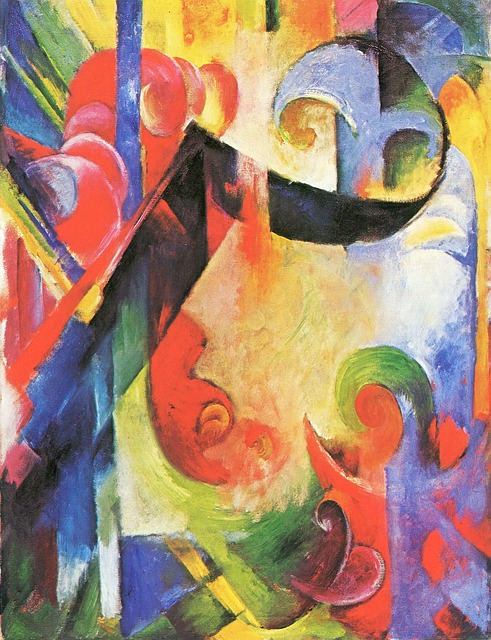The time to buy art is now. Investing in the art industry and the careers of artists remain vital, but the broader economic, personal, and cultural benefits we can glean from owning art have become even more pronounced in recent months. The ongoing coronavirus pandemic has caused mass unemployment across the nation, and artists are among some of those who have been hit the hardest; a survey conducted by Americans for the Arts reports that nearly 95% of artists have experienced some income loss due to Covid-19.
The strain and uncertainty of the current moment pushes us to seek relief, inspiration, and hope elsewhere—for this, we must turn to art. Buying and owning art creates substantial economic, emotional, and cultural benefits for the artist, the buyer, and the greater community; it provides financial support to artists and art institutions during times of strain, inspiration to its buyers during times of confusion, and captures societal attitudes, shifts, and movements as they happen, allowing us to find beauty and inspiration in uncertainty and change. Those looking to continue investing in art, or to get their foot in the door of the art world, should choose to do so now in order to create the widest possible impact with their dollar.
Investing in Both Artists and in the Economy
The most obvious reason to buy art right now is to provide necessary financial relief to working artists to allow their careers to progress. Artists must continue to purchase art supplies, rent studio space, pay their staff (if applicable) in order to help create their works, sustain their professional and personal lives, and rely on a consistent income to do so. In the same way we support other small businesses during times of economic downturn, we should similarly support artists as legitimate businesspeople. A sustained income is essential to any functioning business, and artists are no different. While their creativity itself is perhaps not dependent on their finances, their ability to produce and share their art with a larger audience is.
Buying art is not primarily an investment in the financial appreciation of a piece, the way one would invest in stock. There are better investments, from a purely monetary perspective. Buying art is, however, an investment in our total economy, which we need now more than ever. There are approximately 4.9 million working artists (including both visual and performing artists) in the United States, a group that contributes $763.6 billion to the US economy, according to 2018 data from the U.S. Bureau of Economic Analysis (BEA) and the National Endowment for the Arts (NEA). The same data reveals that the arts industry contributes more to the national economy than the agricultural, transportation, and warehousing industries respectively. Continuing to invest in artists then becomes a national act, supporting a sense of industry, the individual worker, and the idea of self-sufficiency. It encourages going against the grain and forging ahead with one’s own skill and savvy. Returning to local artists from whom you have bought art in the past, and taking advantage of their online portfolios and markets, solidifies this idea, establishes your sense of continued support for the art industry, and invests money into your local economy.

The cancellation or postponement of globally-renowned art fairs, such as Art Basel Hong Kong and Art Paris, and the decline in tourism to majors art epicenters like Italy and France, jeopardizes the strength of the art world and poses significant threat to major world economies. Top auction houses—Sotheby’s, Christie’s, and Phillips reported a 79% drop in revenue during their second quarter as compared to the previous year. Many of these art houses have adapted by hosting virtual auctions, expanding existing telephone and remote bidding options, and building their websites and online presence in general—so if you are someone with an already- established relationship to one of these institutions, and the means to support them, you can seamlessly continue your participation. You can also explore virtual art fairs as they pop up, and visit other online auctions and sales. As artists and art houses adapt, collector support is vital to preserving beloved institutions and reinvigorates a portion of the economy that is currently severely compromised.
Buying art serves as a personal investment, one that exists independently of the stock market and whose value can continue to appreciate even during times of economic recession. While there is of course no guarantee that an artwork’s value will grow over time, buying art allows individuals to diversify their investment portfolio and offers the opportunity for large returns in the future. Purchasing art can serve as an entry point into the larger world of investing and be attractive to those who are looking to tie together an appreciation of art with personal financial independence and progression.
Art & Empathy
Questions then arise: “Why choose art? Can’t we just as easily—or perhaps more easily—buy coffee, or clothing, and support local businesses and the economy in that way?” To that the answer is, of course, yes, and this article is in no way advocating against supporting other businesses in favor of art. But, there are benefits beyond those purely economic ones that art brings to those who buy it, benefits that potentially achieve a permanence and profundity that purchasing other goods does not.
Among those benefits is art’s ability to inspire and elicit emotion and introspection. The sense of being understood by a piece of art and feeling a connection to it should be enough of a reason to buy it—while the financial aspect of buying art is perfectly legitimate and essential, as discussed above, so is buying art for the sheer enjoyment of a piece. We find ourselves now in a moment of uncertainty and frustration, and buying art can punctuate those emotions with ones of happiness and understanding. This aspect of buying art is one that appeals to all types of people; as we collectively experience the gravity of this moment, we can all seek relief and solace in art.
The connection between creating art and improved mental and emotional health is one being explored more thoroughly in recent years, and findings reveal that creating art can reduce stress and anxiety, promote increased relaxation, and encourage greater creative thinking. While purchasing art is of course different from creating it, the act of buying art pushes individuals to engage with their creative sides in a similar way. Buying art requires looking deeply into the meaning of a piece, appreciating and understanding its craftsmanship and style, and thoughtfully engaging with its message.
Buying art requires self-education and research—research into the time period in which a piece was created, the political or social inspirations behind its creation, and the background and style of the artist themselves. These processes invite creativity, inspiration, and hope into the lives of those who purchase them, and widens our knowledge of new subjects, cultures, and ideas. Especially during this moment in time, art provides renewed excitement and appreciation of beauty, artistry, and the world around us.
Art as Artifact
We find ourselves now in a moment of tremendous significance—a global pandemic persists, the fight for civil rights surges onward, and the upcoming presidential election looms large. Individuals have consistently relied on art to preserve historic moments and act as a record for future generations, and now is no different. All those working in some way to usher in a new period of change should not forget art’s ability to capture the experiences we are having in the current moment and the emotions we are feeling during this time, and preserve them so that we learn, progress, and become better—this is of vital importance. First-time art buyers and young people may be particularly invigorated by this sense of art’s political and cultural significance, and should choose to purchase art that continues to inspire and excite them in a similar way. Looking to purchase art from artists who represent your beliefs and further the causes you believe in supports artists who are creating and preserving history with their work, and establishes this pattern to continue as you grow.
While the art we purchase during this time need not explicitly call upon current events, it will nonetheless be heavily influenced by the time period in which it was created, serving a certain historical importance and telling a story. Buying and owning art is thus an investment in a moment in time and cements its importance in our minds.
But once empowered to buy art, we must take this motivation and consciously move it forward, searching for artists who speak to us and for art that, for one reason or another, inspires us. During this heavily virtualized time, visit the websites of your favorite galleries and email artists to learn about their art that is available for purchase. Also take this time to branch out and explore types of art that might be new to you—visit the Santa Fe Indian Market’s (SWAIA) virtual marketplace at Artspan to delve into the wonders of Native American art and culture, for example. Take advantage of technologically advanced remote auctions and biddings to access art from the comfort of your own home and to explore the art industry as it moves online. Most importantly, take steps like these to consciously maintain your curiosity in the arts, purchase art that excites you, and you will discover art whose benefits abound.





